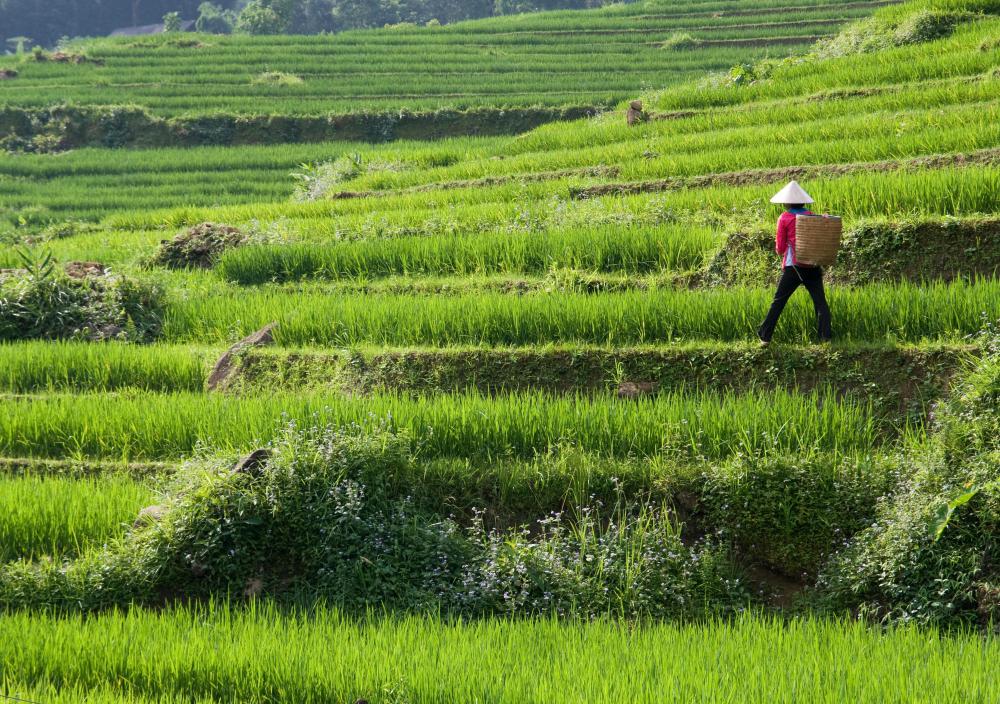At DelightedCooking, we're committed to delivering accurate, trustworthy information. Our expert-authored content is rigorously fact-checked and sourced from credible authorities. Discover how we uphold the highest standards in providing you with reliable knowledge.
What Is Involved in Milling Rice?
Milling rice involves removing the husk and bran layers to produce polished, white rice. It is part of the harvesting process necessary to make rice fit for human consumption, and can be done by hand or machine. Traditionally, milling rice consisted of pounding the rough rice with stones to remove layers of hull and bran. More modern methods use machines in the milling rice process.
Several processes occur before milling techniques come into play. Drying is a vital step to remove excess moisture and prepare the crop for milling, because it extends storage life and preserves nutritional qualities. Small family farms might use the sun to dry their crops, which is the least expensive method. Rice may also be dried by heated air and via a salt solution sprayed onto the paddies.

Harvesting rice typically occurs three months after sowing. Rice is ripe when the tops of the plants begin drooping and the stems turn yellow. At this point, water is drained from the paddies, which accelerates the ripening process and prepares the crop for harvesting.
Sharp implements, such as sickles, represent traditional harvesting methods. Some regions employ animals to trample the rice plants and break them down. Machines are typically used in large farming operations to cut rice plants and lay them in a row for gathering.

Before milling rice processes take place, the crop is sifted to remove small rocks or other debris from the field. A shelling machine loosens the husks in preparation for removal by a hulling machine. Brown rice is produced when the husks are removed, but the bran layer remains. If white rice is desired, both layers are discarded. Not all hulls are eliminated by the machine, creating the need to separate the hulled rice from grains that retain their husks.

After completion of the milling procedure, the kernels are graded according to several factors. The quality of milled rice depends on the environment where it was grown, the number of broken kernels, its whiteness, and the amount of moisture left in the grains. If proper harvesting and milling rice processes are used, the quality of the end product typically improves. Farmers aim to produce whole grain rice free from impurities.

Standards to measure quality protect consumers from inflated prices for poor-quality rice. The grading process also promotes efforts to limit waste. Enhanced farming and milling rice methods can produce higher-quality rice and higher profits for the farmer.
AS FEATURED ON:
AS FEATURED ON:














Discuss this Article
Post your comments